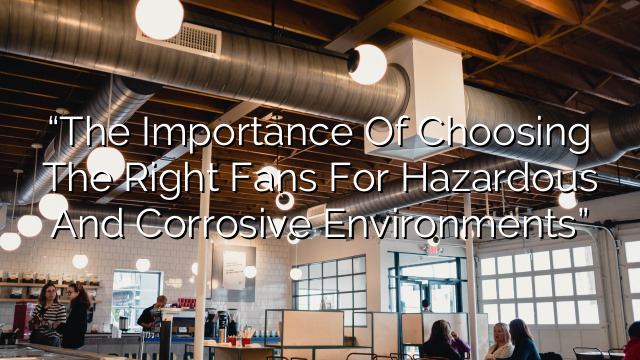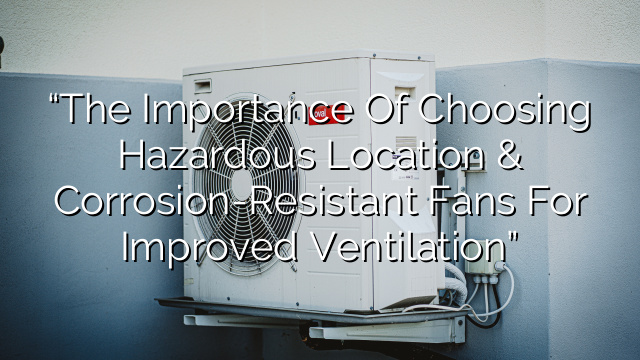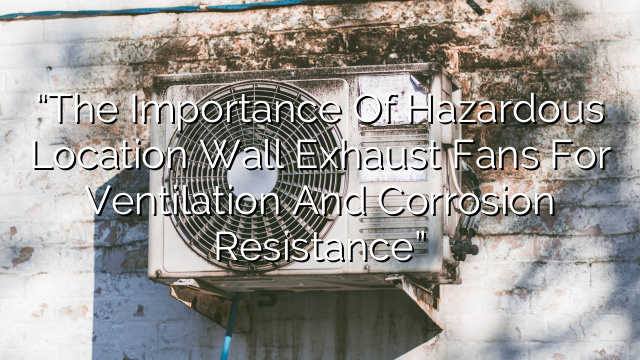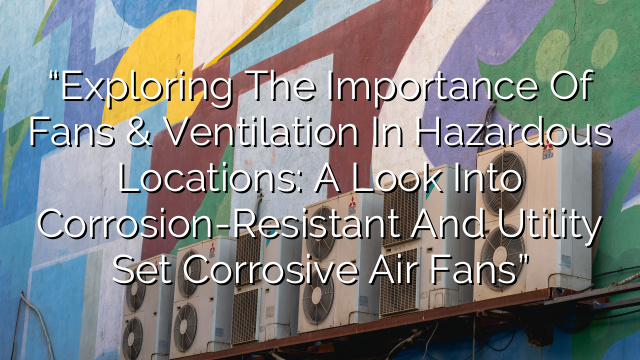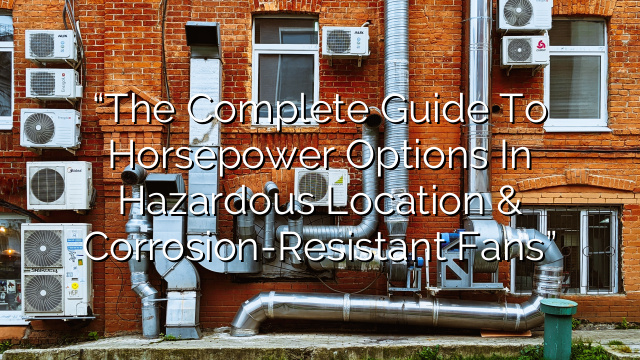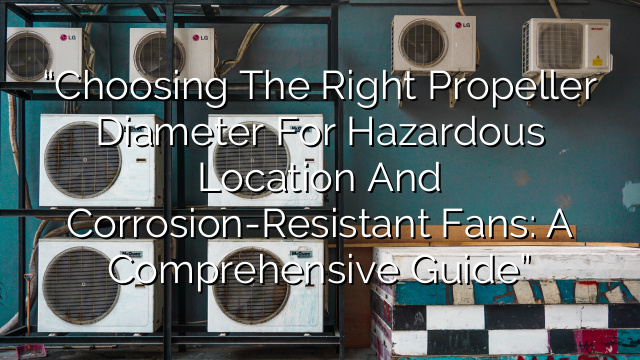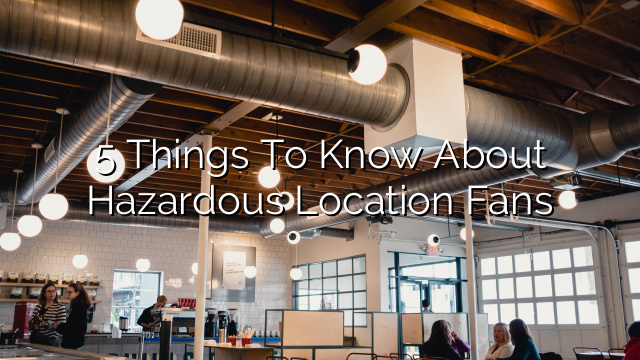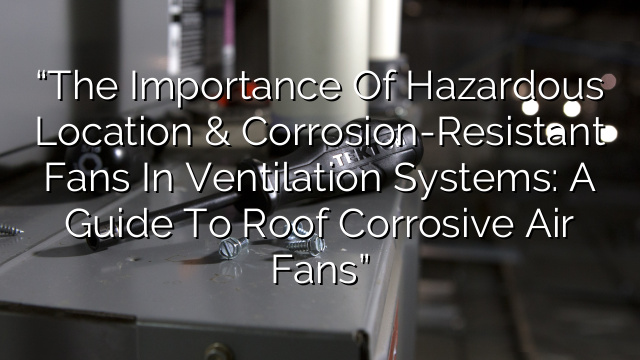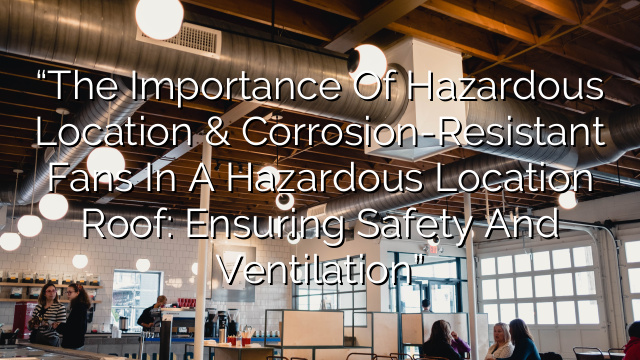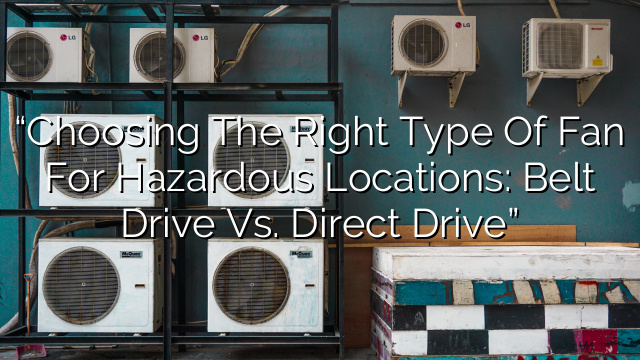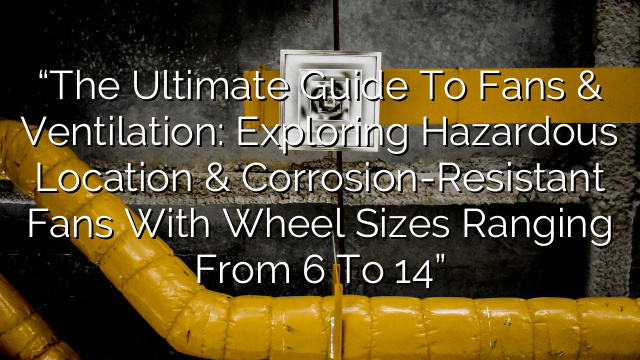When it comes to ventilation systems in hazardous and corrosive environments, choosing the right fans is crucial. These environments come with their own set of challenges that can pose serious risks to both the equipment and the people working in these spaces. In this blog post, we will discuss the importance of selecting the appropriate fans for hazardous and corrosive environments and explore some of the available options.
Fans & Ventilation
Fans play a critical role in maintaining proper airflow and ventilation in industrial and commercial spaces. They help to remove heat, air pollution, odors, and other contaminants from the air, ensuring a safe and comfortable environment for workers. However, in hazardous and corrosive environments, the risks associated with improper ventilation can be amplified.
Hazardous Location & Corrosion-Resistant Fans
Hazardous environments, such as chemical processing plants, oil refineries, and paint booths, have specific requirements for ventilation systems. These environments typically contain flammable gases, vapors, or dust that can ignite and cause explosions or fires if not properly controlled. To mitigate these risks, fans used in hazardous locations must meet strict safety standards.
Corrosion-resistant fans are designed to withstand the corrosive effects of chemical fumes, aerosols, and other corrosive compounds commonly found in industrial settings. These fans are fabricated from materials that are resistant to corrosion, such as stainless steel or other non-corrosive metals.
Inline Corrosive Air Fans
Inline corrosive air fans are specifically designed to handle corrosive air and fumes. They are often used in applications where the fan needs to be installed within the ductwork, allowing for efficient and effective airflow. These fans are commonly used in laboratories, industrial processes, and wastewater treatment facilities.
Inline corrosive air fans come in various sizes and configurations to suit different applications. They are typically constructed from materials such as fiberglass-reinforced plastics or similar corrosion-resistant materials. These fans offer the added benefit of being low maintenance and require minimal upkeep.
The Importance of Choosing the Right Fans
Choosing the right fans for hazardous and corrosive environments is essential for several reasons:
- Safety: Fans that are specifically designed for hazardous locations help prevent the risk of explosions and fires by meeting stringent safety standards and preventing the ignition of flammable gases or dust particles.
- Corrosion Resistance: Corrosion-resistant fans are designed to withstand the corrosive effects of chemicals and fumes, ensuring longevity and preventing equipment failure.
- Efficiency: Fans that are properly sized and designed for the specific application ensure efficient airflow, maintaining a clean and safe environment while minimizing energy consumption.
- Compliance: Choosing fans that meet relevant safety standards and regulations ensures compliance with industry requirements and mitigates the risk of penalties or legal issues.
FAQs
- Q: Can I use regular fans in hazardous or corrosive environments? A: No, regular fans are not suitable for hazardous or corrosive environments. These environments require fans that meet specific safety and corrosion resistance standards to mitigate risks and ensure long-term performance.
- Q: How do I determine the right fan for my hazardous or corrosive environment? A: It is essential to consult with experts in the field of ventilation and HVAC systems. They can assess the specific requirements of your environment and recommend the appropriate fan based on factors such as air volume, pressure, corrosive agents, and regulatory requirements.
- Q: Are there any maintenance considerations for fans in hazardous or corrosive environments? A: Yes, regular maintenance is critical for fans in such environments to ensure their continued performance. This may include cleaning, lubrication, and inspection of fan components. Additionally, fans should be inspected for any signs of corrosion or damage and replaced if necessary to maintain safety and efficiency.
- Q: Can I retrofit existing fans in hazardous or corrosive environments? A: Retrofitting existing fans may be possible depending on the specific circumstances. However, it is essential to consult with experts to ensure that the retrofitting process meets safety standards and regulatory requirements.

